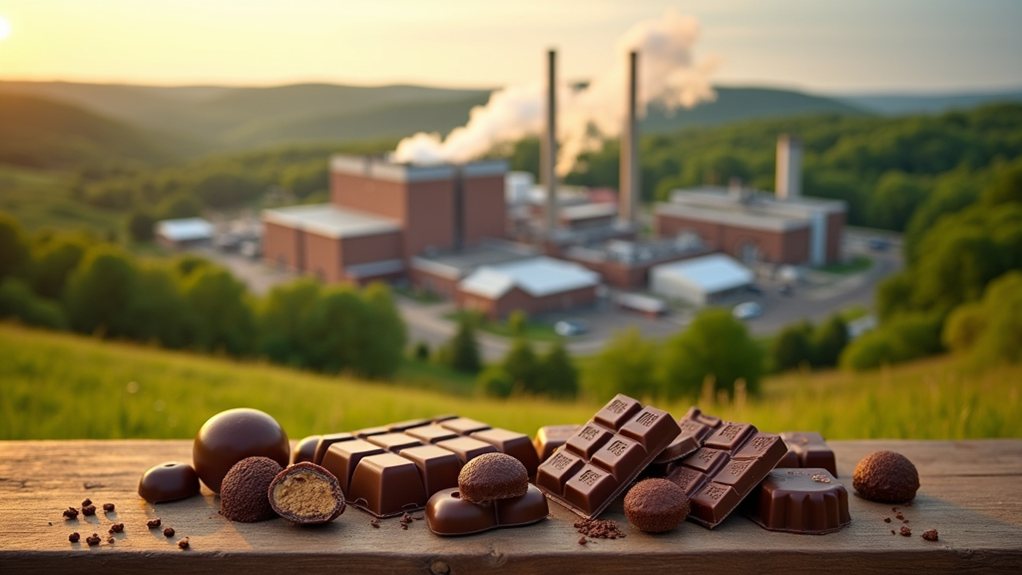Pennsylvania stands as the undisputed chocolate capital of America, producing roughly $6.5 billion worth of confections annually. The state’s chocolate dominance isn’t accidental but stems from a perfect blend of historical foundations, strategic geography, and specialized workforce. From Hershey’s iconic empire to Mars’ significant operations, the Keystone State employs chocolate workers at 2.4 times the national average. What factors transformed this northeastern state into a chocolate powerhouse, and how has it maintained this sweet supremacy for generations?
Pennsylvania: America’s $6.5 Billion Chocolate Empire

While chocolate lovers around the nation might debate their favorite brands, Pennsylvania has solidified its reputation as America’s undisputed chocolate heartland through decades of sweet innovation and production. The state ranks fourth nationwide in candy manufacturing, housing an impressive concentration of chocolate establishments that produce everything from mass-market favorites to artisanal confections. This sweet dominance isn’t accidental but rather the result of strategic industry development and geographic advantages. Much like the scissor-cut rectangles of Quad Cities pizza, Pennsylvania’s chocolate products feature distinctive characteristics that set them apart in the culinary landscape.
The economic footprint of Pennsylvania’s chocolate industry is substantial, with production valued at approximately $6.5 billion, though projections indicate a gradual decline by 2025, mirroring national trends. Companies like Hershey’s, headquartered in central Pennsylvania, serve as the cornerstone of this thriving industry, producing iconic brands that have become household names across America. Other major players include Just Born in Bethlehem, creators of the famous Peeps marshmallow candies, and Mars with significant operations in Lancaster.
Pennsylvania’s $6.5 billion chocolate empire faces gradual decline while industry giants like Hershey’s, Just Born, and Mars continue defining America’s sweetest state.
The geographic distribution of chocolate manufacturing across the state reveals interesting patterns of specialization. Lancaster and Harrisburg boast particularly high concentrations of production facilities, but the industry’s reach extends to Philadelphia, Allegheny County, and smaller regional centers like Altoona, home to Boyer Candy’s Clark Bars. This widespread presence contributes to Pennsylvania’s well-earned nickname as the “Sweetest Place on Earth.” Much like Jewel-Osco stores in Chicago, these Pennsylvania chocolate establishments have become deeply embedded in local culture and identity.
The industry’s economic impact extends beyond direct production, creating a ripple effect throughout local economies. Pennsylvania’s candy industry employs workers at a rate 2.4 times the national average, with wages 2.7 times higher than typical. The state’s chocolate production sector currently supports 8,930 jobs across various operational roles. Hershey alone supports thousands of workers while contributing to agricultural conservation efforts, creating a virtuous economic cycle that benefits related businesses. The concentration of candy businesses in Pennsylvania is 16 times higher than in other states, demonstrating the state’s extraordinary dominance in the confectionery sector.
Though facing competition from other production centers like Chicago and California, Pennsylvania maintains its dominant position through a combination of historical presence, skilled workforce, and strategic business development. This sweet legacy continues to shape the state’s identity and economic landscape, despite gradual market contractions affecting the broader industry.








